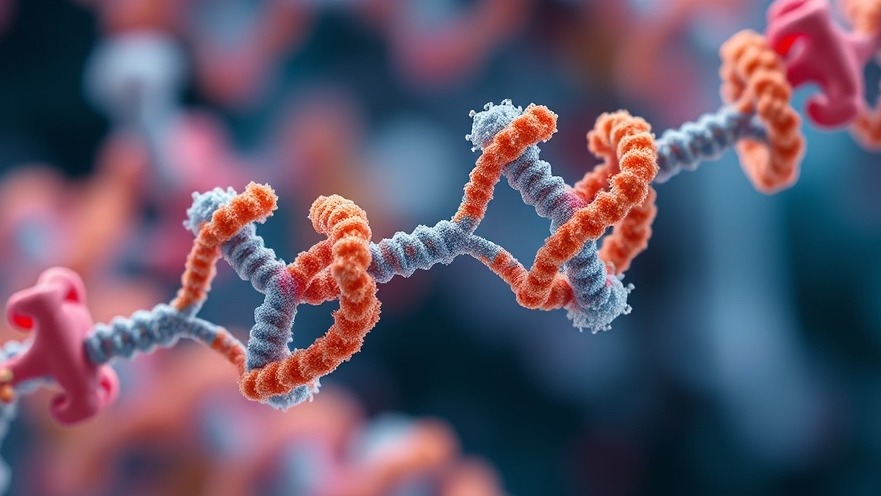
Unraveling the Mysteries of Life’s Origins
The quest to understand the origins of life has intrigued scientists for centuries, prompting debates and research into the intrinsic processes that led to the development of complex organisms. A recent breakthrough from the University of Illinois has illuminated a surprise link between the genetic code and tiny protein fragments, known as dipeptides, which may hold the key to understanding how life began on Earth over 3.8 billion years ago. With the study analyzing billions of dipeptide sequences across thousands of species, this groundbreaking research not only sheds light on life's beginnings but also carries significant implications for fields like genetic engineering, synthetic biology, and biomedical innovation.
The Role of Dipeptides in the Genetic Code
At the core of this research is the observation that dipeptides—simple pairs of amino acids—are fundamental building blocks in the evolution of the genetic code. The study, led by Professor Gustavo Caetano-Anollés, leverages phylogenomics to map the evolutionary relationships between genomes, demonstrating a notable connection between the dipeptide composition of proteins and the development of the genetic framework that governs life. By constructing a detailed phylogenetic tree, researchers have traced how these paired molecules inform our understanding of protein synthesis and the structure of life itself.
How Evolution Supports the Research Findings
Historically, life on Earth evolved in an environment vastly different from today. Caetano-Anollés' previous work identified that ribosomal proteins and transfer RNA (tRNA) only began to emerge later in the evolutionary timeline, supporting the hypothesis that proteins' collaboration was pivotal before the genetic code fully formed. This revelation aligns with the theory that protein-first interactions set the stage for the development of RNA, rather than the reverse, which had been previously conceived.
Implications for Genetic Engineering and Synthetic Biology
The insights garnered from this research are not only academically intriguing but also practical for the future of biotechnology. Understanding how dipeptides function within the genetic framework enables scientists to design more efficient genetic engineering techniques. Applications range from developing robust models for synthetic biology to potential advancements in biomedical innovation. As researchers explore this dual system of genetic and protein codes, the convergence of these fields could lead to novel therapeutic strategies and tools to combat genetic diseases.
Speculative Insights: What Lies Ahead?
As we glean knowledge from the foundational aspects of life, one might ponder the future of genetic research. With emerging technologies harnessing the power of genetic and protein code interaction, the possibilities are vast. Innovations in medicine and agriculture could become reality, such as genetically engineered crops capable of withstanding climate change or tailored gene therapies that combat complex diseases. The field stands on the precipice of significant breakthroughs that could redefine our approach to life science.
Deciphering Life's Dual Language: Why It Matters
The essential question blurring the lines between genetic instructions and protein synthesis is: why does life rely on two distinct languages? The answer could unlock additional layers of biological understanding, exploring how organisms adapt and thrive amid environmental changes. By dissecting this duality, we stand to gain not only insights into our own biology but also into the fundamental architecture that supports life itself.
What Can We Learn?
As we continue to unravel the secrets of life and its origins, the marriage between dipeptides and the genetic code emphasizes the intricate web of interactions that define biological existence. This research encourages a deeper appreciation not only for the science behind life but also for the potential it holds for enhancing human well-being through biotechnology.
By recognizing the implications of these findings and staying engaged with ongoing research, enthusiasts can actively participate in shaping the future of genetic engineering and synthetic biology. As this area evolves, emerging opportunities for application and innovation will likely prompt exciting developments that impact all facets of life, from health to environmental sustainability.
 Add Element
Add Element  Add Row
Add Row 



Write A Comment